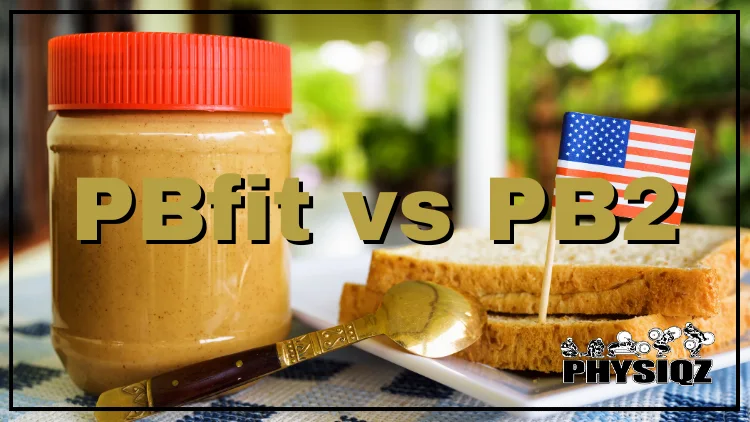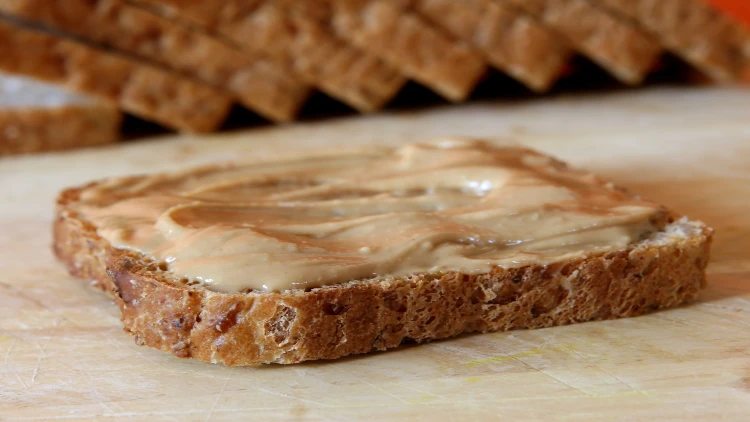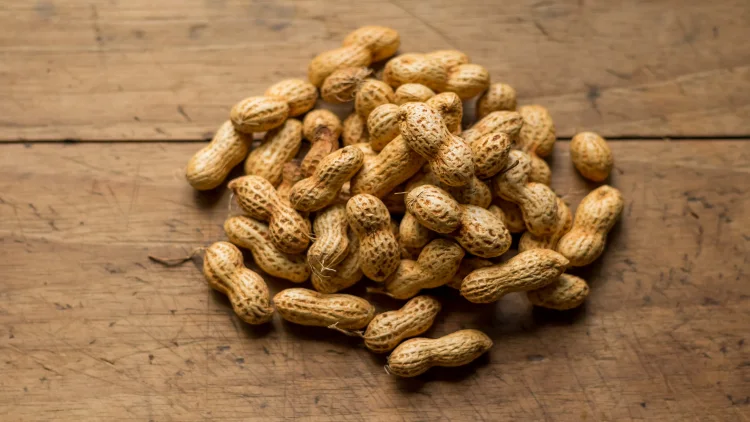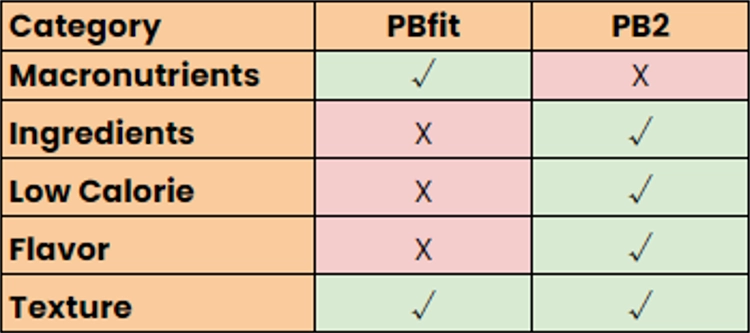
When it comes to peanut butter powder, comparing PBFit vs PB2 can help you determine the exact differences and which is better overall.1
For some, better might mean the taste and texture, and for others that may mean it’s nutrient profile and healthiness.
In either case, we’ll compare everything between the two so you can figure out which one is tastier and determine which is healthier due to the tie breaking key difference.
Key Differences Between PBfit vs PB2
To get a better idea of the key differences between PB2 and PBfit, let’s first take a look at the qualities that are more arbitrary before we delve into their nutrient profiles.
PBfit
- Flavor: General consensus is that Original PBfit tastes similar to real peanut butter, but more subtle
- Texture: Creamy and smooth but only if mixed well
- Pros: No artificial taste; less carbs, more protein and fiber
- Cons: Many reviews stated that the flavor could be stronger; some complained of gas issues after consuming
- Water Needed: Combine 1.5tbsp with 2 tbsp water and stir until smooth
PB2
- Flavor: Great, strong peanut butter flavor; some said PB2 vs Jif taste the same
- Texture: Easy to make as thick or thin as desired by adding or reducing water added
- Pros: Rich in flavor, similar taste to real peanut butter; lower in calories and sodium
- Cons: Slightly higher in carbs, but still very reasonable; some complaints about causing gas or bloating
- Water Needed: Combine 1.5tbsp with 2 tbsp water and stir until smooth
Of course, consumers typically want to consider macronutrients of each, meaning the carbohydrate, fat, protein and calorie content in both.2
A Comparison of PBfit and PB2 Macros, Calories & Nutrition Facts
For those who are more concerned about the nutritional information over taste, texture and flavor, the table below lays out PB2 vs PBfit macros, calories & nutrition facts for easy comparison. Specifically, we’ve included the sodium, fiber, sugar, flavor, pros, cons, and water needed for each so that these are easy to reference.
PBfit Nutritional Information – Per 2 tbsp Serving (6 oz)
- Calories: 70
- Total Carbs: 5g
- Net Carbs: 2g
- Fiber: 3g
- Fat: 2g
- Protein: 8g
- Sodium: 150mg
- Sugar: 2g
PB2 Nutritional Information – Per 2 tbsp Serving (6 oz)
- Calories: 60
- Total Carbs: 5g
- Net Carbs: 4g
- Fiber: 1g
- Fat: 1.5g
- Protein: 6g
- Sodium: 90mg
- Sugar: 2g
PBfit vs PB2 Ingredients
Each of these powdered peanut varieties has just 3 ingredients. PBfit contains peanut flour, coconut palm sugar, and salt.
PB2, on the other hand, is made from roasted peanuts, sugar, and salt. Though these are very similar ingredients, their slight differences could lead to bigger nutritional and health benefit differences so we’ll move on to evaluate other nutritional aspects as well.
PBfit Ingredients
- Peanut Flour
- Coconut Palm Sugar
- Salt
PB2 Ingredients
- Roasted Peanuts
- Sugar
- Salt
Which Is Healthier: PBfit or PB2?
To determine the healthiest option between PBfit and PB2, checking the ingredients above doesn’t provide much context because they’re nearly the same.
However, we can compare things such as sodium contents, the affects or roasting nuts, and the wholesomeness of the ingredients.
Overall PB2 is healthier because it has less sodium, calories and it’s made from whole peanuts rather than peanut flower. On the other hand, PB2 is also made or roasted nuts while PBfit is not so that’s the only detractor.
Flavors of PBfit and PB2
Both of these manufacturers have various products, but the table below shows only the flavors of their peanut butter powders:
| PBfit Peanut Butter Powder Flavors | PB2 Peanut Butter Powder Flavors |
|
|
PB2 Is the Overall Winner When Compared To PBfit
Between PBfit and PB2, the overall winner is PB2 because the tie breaking key differences such as being lower in sodium and calories, having a better flavor and it’s also easier to make thicker or thinner based on preference. PB2 also takes the number one spot for weight loss due to the fewer calories and healthier ingredients.

Source: Robert Owen from Pixabay3
Although PBfit comes out on top for being low carb and slightly higher in protein and fiber, they use peanut flour instead of raw peanuts so they come in second place. PBfit may be more suited to those on the keto diet, though, because of the higher fat and protein content and half the net carbs.
Here’s a back to back comparison of each and their respective categories:
What Are the Benefits of Using PBfit & PB2 Over Peanut Butter?
Although real peanut butter has its perks and tastes great, there are many benefits to using PBfit and PB2. First, allergic reactions to peanuts are less likely when using powdered peanut butter than the real deal
However, since peanuts are still used as ingredients in both PBfit and PB2, anyone with a peanut allergy should certainly take precautions and either avoid peanut butter powder altogether or try a very small amount instead of helping themselves to a heaping serving.4
Those with more severe allergies are likely best off not risking it at all.
As for the macros and nutritional information, one serving (2 tbsp) of Jif creamy peanut butter has very similar net carbs (6g), protein (7g), and fiber (2g) per serving in comparison to the peanut butter powder options we’ve covered.
The calorie content of real peanut butter is much higher though, with 190 calories per serving.5 Along the same lines, the fat content in a serving of peanut butter is 16g–21% of the average daily value–in contrast to the less than 2g of fat in PBfit and PB2.
Therefore, many people figuring out ways to get skinny fast or following trending diets may want to try these or other peanut butter powders to drastically decrease their calorie and fat intake while still getting to enjoy the great taste.
Those on carb restricting diets such as the keto low carb diet might be glad to hear that both peanut butter and the powdered versions are all safe to eat and reasonably low in carbs–as long as they limit themselves to one serving. Individuals who are bulking or on powerlifting programs are likely more focused on the protein content and worried that peanut butter alternatives or powders won’t offer as much as real peanut butter.
However, they can rest assured that their powerlifting goals will not be altered or set back by using powdered peanut butters, with the protein actually being higher in Pbfit than in traditional peanut butter and PB2 having only 1g less protein than peanut butter.
On top of these health benefits, peanut butter powders are much more convenient for traveling, are generally less sticky and messy, and are said to pose less of a choking hazard than traditional butter does due to its texture and finer powder.
Healthiest Peanut Butter Powder Options
Peanut butter powders are not only growing more and more popular for their convenience; they are also more suitable for many weight loss diets that focus on restricting fat and caloric consumption.
With so many brands and varieties to choose from now, we’ve reviewed some of the healthiest peanut butter powder options including a couple of no sugar peanut butter powder options and we’ll cover some of their best features too.
PB&Me Organic Powdered Peanut Butter
PB&Me’s USDA-certified organic peanut butter powder is vegan, gluten free, and keto friendly. It has no sugar added and is made from a single ingredient: organic peanuts.
- Serving Size: 2 tbsp (12g)
- Ingredients: Organic Peanuts
- Taste: Subtly Sweet Peanut Butter Flavor
- Reviews: 4.5/5
- Nutrition:
- 45 Calories
- 4g Total Carbs
- 2g Net Carbs
- 1.5g Fat
- 6g Protein
- 2g Fiber
- 1g Sugar
Check the price of Organic PB&Me powdered peanut butter
Tru-Nut Powdered Peanut Butter
Powdered peanut butter from Tru-Nut has some calcium, iron, and potassium content for increased health benefits and is also gluten free and non-GMO. The only downfall is that some who tried Tru-Nut complained of the taste, saying that they’d prefer it to be richer with more of a real peanut butter taste.
- Serving Size: 2 tbsp (12g)
- Ingredients: Roasted Peanuts, Sugar, Sea Salt
- Taste: Less Sweet, Light Peanut Flavor
- Reviews: 4.5/5
- Nutrition:
- 50 Calories
- 4g Total Carbs
- 3g Net Carbs
- 1.5g Fat
- 6g Protein
- 1g Fiber
- 1g Sugar
Check out Tru-Nut peanut butter powder
Naked PB Premium Powdered Peanut Butter
Naked PB “100% premium powdered peanut butter with nothing to hide” wins the title for best peanut butter powder; although these were all extremely close in macros, Naked PB wins the top spot for healthiest due to its slightly higher protein content, better reviews, and great taste. It’s also vegan, preservative free, soy free, additive free, and contains no added salt or sugar.
This brand also offers many other health products including pea protein, shake, egg white, collagen, and pre-workout powders among others.
- Serving Size: 2 tbsp (12g)
- Ingredients: Roasted Peanuts
- Taste: Rich, Real Peanut Butter Flavor
- Reviews: 4.6/5
- Nutrition:
- 50 Calories
- 3g Total Carbs
- 1g Net Carbs
- 1g Fat
- 7g Protein
- 2g Fiber
- 1g Sugar
Find Naked PB peanut butter powder here
Best Uses of Peanut Butter Powders

Source: Isai Dzib from Unsplash6
Powdered peanut butter is not only healthier than peanut butter (as long as it doesn’t contain a lot of added salt and sugar), but it also has a vast array of uses. For someone wanting higher protein foods, peanut butter powder can easily be mixed into smoothies, yogurts, baked goods, or even used to create healthy protein shakes.7
This powder is much more than just a peanut butter replacement. Several other uses or foods that peanut butter powders can be added to include:
- Baked Goods
- Brownies
- Cookies
- Granola
- Ice Cream
- Icing
- Muffins
- Oatmeal
- Pancakes
- Protein Bites
- Sauces
- Shakes
- Smoothies
- Yogurt
Peanut butter powders can be a great addition to anyone’s kitchen or pantry, as they are very versatile, convenient, and still taste great. They can also be more effective for weight loss diets than real peanut butter.
If you’re interested in trying a peanut butter powder but don’t know whether to go with PBfit vs PB2, we’ve found that they each have their own strengths–so go ahead and try both!
Frequently Asked Questions
Which Tastes Better: PBfit or PB2?
For anyone curious what tastes better–PBfit vs PB2– PB2 comes out ahead since the roasted peanuts really bring out the rich peanut flavor and in contrast, PBfit has a more subtle, lighter taste.
PB2 Chocolate vs PBfit Chocolate–Which Is Better for Weight Loss?
For anyone who has more of a sweet tooth or prefers a chocolatey flavor with their peanut butter might be wondering what’s the difference between PB2 chocolate vs PBfit chocolate. Thankfully both brands have a chocolate option, but for weight loss we have to go with PB2’s “powdered peanut butter with Dutch cocoa” instead of PBfit’s “chocolate peanut butter” option.
PB2’s chocolate peanut butter powder has 20 fewer calories and slightly less fat.
Is Peanut Butter Powder Good for Cooking With?
Cooking with PB2 or PBfit is not only possible but encouraged–so much so that both brands offer plenty of recipes on their websites including Thai peanut sauce, keto PBfit snickerdoodle protein balls, no bake PBfit chocolate oatmeal cups, an almond apple pie smoothie bowl recipe, and dozens more tasty recipes to try out.
In addition to cooking with the peanut butter powders, PB2 also offers muffin, brownie, and cookie mixes and recipes.
Does Powdered Peanut Butter Expire?
Although peanut butter powders last much longer than real peanut butter due to the lack of oils, powdered peanut butter can still go bad. Even though peanut butter powder should last years if in a dry environment, do be sure to check the expiration date for safety if unsure when the container was bought.
Once reconstituted, peanut butter powder can last in the fridge for about a week.
How Is Powdered Peanut Butter Made?
Peanut butter is made with many of the same ingredients as traditional peanut butter–namely the roasted peanuts, sweetener (often sugar or molasses), and salt.
The difference in how they’re made is that peanut butter powders are made by pressing the roasted peanuts until most of the fatty oils are completely extracted, then the remaining peanuts are finely ground into powder.
References
1efired. Canva. Accessed 22 April 2023. <https://www.canva.com/photos/MAC2ucKDoQc-jar-of-peanut-butter-and-toasts/>
2Wikipedia the Free Encyclopedia. (2023, February 10). Macronutrients. Wikipedia. Retrieved February 15, 2023, from <https://en.wikipedia.org/wiki/Nutrient#Macronutrients>
3Owen, Robert. “Board Bread Brown – Free photo on Pixabay.” Pixabay, 5 March 2016, Accessed 6 April 2023. <https://pixabay.com/photos/board-bread-brown-butter-crumb-1239113/>
4MedLine Plus. (2023, January 23). Allergic Reactions. National Institute of Health. Retrieved February 15, 2023, from <https://medlineplus.gov/ency/article/000005.htm>
5Wikipedia the Free Encyclopedia. (2023, February 14). Calorie. Wikipedia. Retrieved February 15, 2023, from <https://en.wikipedia.org/wiki/Calorie>
6U.S. Department of Agriculture. (2023). Protein Foods. My Plate. Retrieved February 15, 2023, from <https://www.myplate.gov/eat-healthy/protein-foods>
7Isai Dzib. “bunch of brown peanuts photo – Free Brown Image on Unsplash.” Unsplash, 3 December 2019, Accessed 6 April 2023. <https://unsplash.com/photos/TysS85XkjgI>
